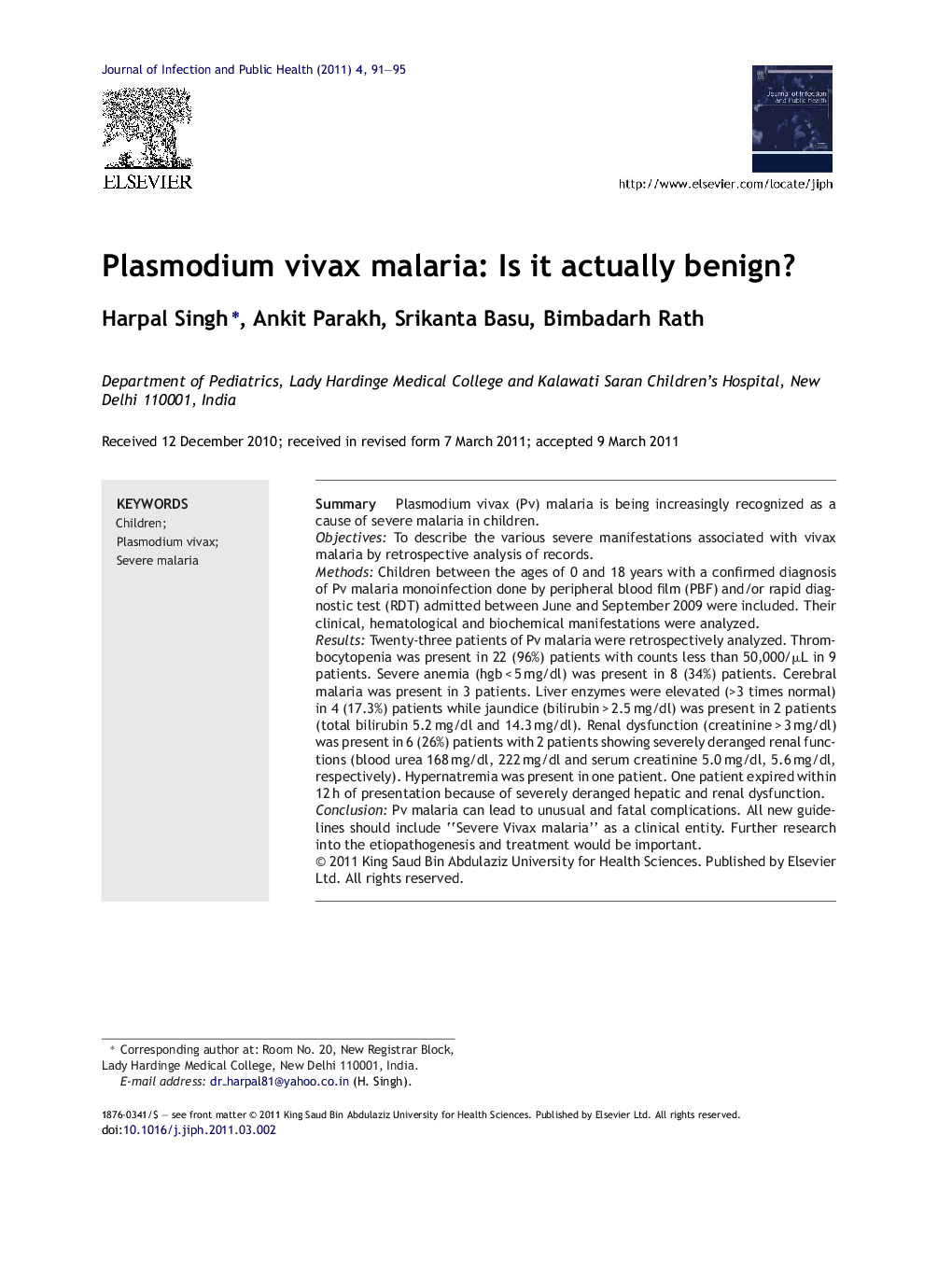| Article ID | Journal | Published Year | Pages | File Type |
|---|---|---|---|---|
| 3406212 | Journal of Infection and Public Health | 2011 | 5 Pages |
SummaryPlasmodium vivax (Pv) malaria is being increasingly recognized as a cause of severe malaria in children.ObjectivesTo describe the various severe manifestations associated with vivax malaria by retrospective analysis of records.MethodsChildren between the ages of 0 and 18 years with a confirmed diagnosis of Pv malaria monoinfection done by peripheral blood film (PBF) and/or rapid diagnostic test (RDT) admitted between June and September 2009 were included. Their clinical, hematological and biochemical manifestations were analyzed.ResultsTwenty-three patients of Pv malaria were retrospectively analyzed. Thrombocytopenia was present in 22 (96%) patients with counts less than 50,000/μL in 9 patients. Severe anemia (hgb < 5 mg/dl) was present in 8 (34%) patients. Cerebral malaria was present in 3 patients. Liver enzymes were elevated (>3 times normal) in 4 (17.3%) patients while jaundice (bilirubin > 2.5 mg/dl) was present in 2 patients (total bilirubin 5.2 mg/dl and 14.3 mg/dl). Renal dysfunction (creatinine > 3 mg/dl) was present in 6 (26%) patients with 2 patients showing severely deranged renal functions (blood urea 168 mg/dl, 222 mg/dl and serum creatinine 5.0 mg/dl, 5.6 mg/dl, respectively). Hypernatremia was present in one patient. One patient expired within 12 h of presentation because of severely deranged hepatic and renal dysfunction.ConclusionPv malaria can lead to unusual and fatal complications. All new guidelines should include “Severe Vivax malaria” as a clinical entity. Further research into the etiopathogenesis and treatment would be important.
